Breastfeeding is one of those things that sounds natural, but it can be anything but in the beginning. For many new moms in Canada, those early days can feel overwhelming. You’re learning your baby, your body, and a brand-new routine.
The good news? You don’t have to do it alone. With the right support, guidance, and a little patience, breastfeeding can become a rewarding experience for both you and your baby. This guide covers everything from latch tips to milk supply, all tailored to support your breastfeeding journey in those crucial first weeks.
Skin-to-Skin Contact
Holding your baby skin-to-skin immediately after birth triggers instinctive feeding behaviours and supports early bonding. This contact also helps regulate your baby’s temperature and blood sugar while stimulating vital biological responses.
Tip from the start: If you've had a cesarean or need time to recover, your partner can offer skin-to-skin contact to help maintain that early closeness.
Benefits of frequent skin-to-skin contact:
- Accelerates the initiation of breastfeeding
- Encourages more frequent feeding
- Reduces crying and infant stress
- Builds parent-infant attachment
Aim to stay skin-to-skin during the first feed and as often as possible in the early days.
Recognizing Feeding Cues: Follow Your Baby’s Lead
Crying is a late sign of hunger. To make feeding smoother and more effective, look for early feeding cues:
- Rooting (turning toward breast)
- Tongue or lip movement
- Sucking on fists
- Quiet fussing
Watch your baby, not the clock. Rooming in helps you learn these cues and respond promptly, making breastfeeding more peaceful and productive.
Latching Tips and Effective Feeding Techniques
Here's how to encourage a deep, comfortable latch:
- Tickle baby’s lips with the nipple until they open wide
- Ensure baby’s lips are flanged outward
- Support your breast with your hand if needed (keep fingers off the areola)
- Break suction gently with a clean finger if switching sides
Practical tip: Keep your baby’s hands free during feeds. This helps them find the breast and self-latch more easily.
Feed on Demand, Not on a Schedule
Every baby is different, some prefer frequent, shorter feeds, while others feed for longer stretches. Aim for 8+ feeds per 24 hours, including overnight sessions.
Night feeds are especially important for establishing supply in the first 4–6 weeks. Being responsive during this window helps regulate your body’s milk production.
Is Your Baby Getting Enough Milk?
By day 6, signs of good milk intake include:
- Six or more wet diapers daily
- Frequent stools
- Regained birth weight by day 14
Note: Most babies don’t need bottles or formula in the first 24 hours. Supplementing early without medical need can disrupt latching and milk production.
Understanding Milk Supply and Growth Spurts
Breast milk production works on a supply-and-demand basis. Feeding more frequently during growth spurts (common around days 3, 7, and beyond) naturally increases your milk supply.
Breast milk also evolves to meet your baby’s needs: even months into breastfeeding, it continues to offer immune protection and optimal nutrition.
Maternal Wellbeing: Support for You Matters Too
Taking care of yourself supports your milk supply and emotional wellbeing. Prioritize:
- Rest when the baby sleeps
- Hydration and nourishing meals
- Asking for help with chores or meals
Simple care tips:
- Express milk to soothe sore nipples
- Use warm compresses before feeding and cold afterward to relieve engorgement
- Wear breathable, supportive nursing bras
Safety and Substance Use While Breastfeeding
If you're breastfeeding, it's safest to avoid nicotine, alcohol, cannabis, and non-prescribed medications. If abstaining isn’t possible, minimize risk:
- Nicotine: Smoke outdoors, change clothes, and wash before contact
- Alcohol: Wait at least 2 hours per drink before nursing
- Cannabis: Strongly discouraged; if used, limit frequency
- Medications: Always consult your healthcare provider
Build Your Breastfeeding Support Network
You don’t have to do this alone. Reach out early if you’re struggling or have questions. Resources include:
- Lactation consultants and public health nurses
- La Leche League Canada and local peer groups
- Online communities and experienced family members
Tip: Most hospitals offer in-house lactation support—take advantage before discharge.
Going Back to Work or School? You Can Still Breastfeed
Returning to work or studies doesn’t mean the end of breastfeeding. Planning ahead makes a big difference:
- Express and store milk in sterile containers (label and date)
- Refrigerate or freeze promptly; thaw with warm water
- Speak with your employer about pumping accommodations and nursing breaks
Your right to breastfeed in public or request pumping support at work is protected in Canada.
Bonus: Vitamin D and Breastfed Babies
Health Canada recommends that all breastfed infants receive 400 IU (10 µg) of vitamin D daily from birth. Breast milk alone doesn’t provide enough for northern climates, especially in winter months.
Medical Disclaimer
The information provided here is for general education only and not a substitute for professional medical advice. Always consult your healthcare provider for concerns related to feeding, medication, or health conditions.





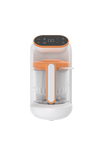
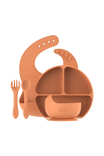
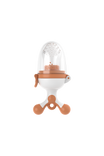
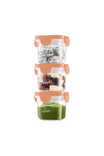
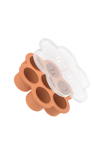
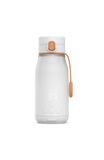
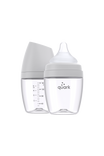
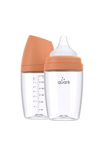
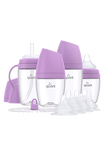
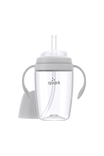
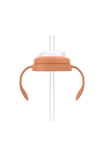
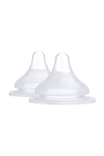
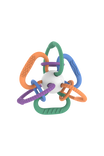




Leave a comment
All comments are moderated before being published.
This site is protected by hCaptcha and the hCaptcha Privacy Policy and Terms of Service apply.